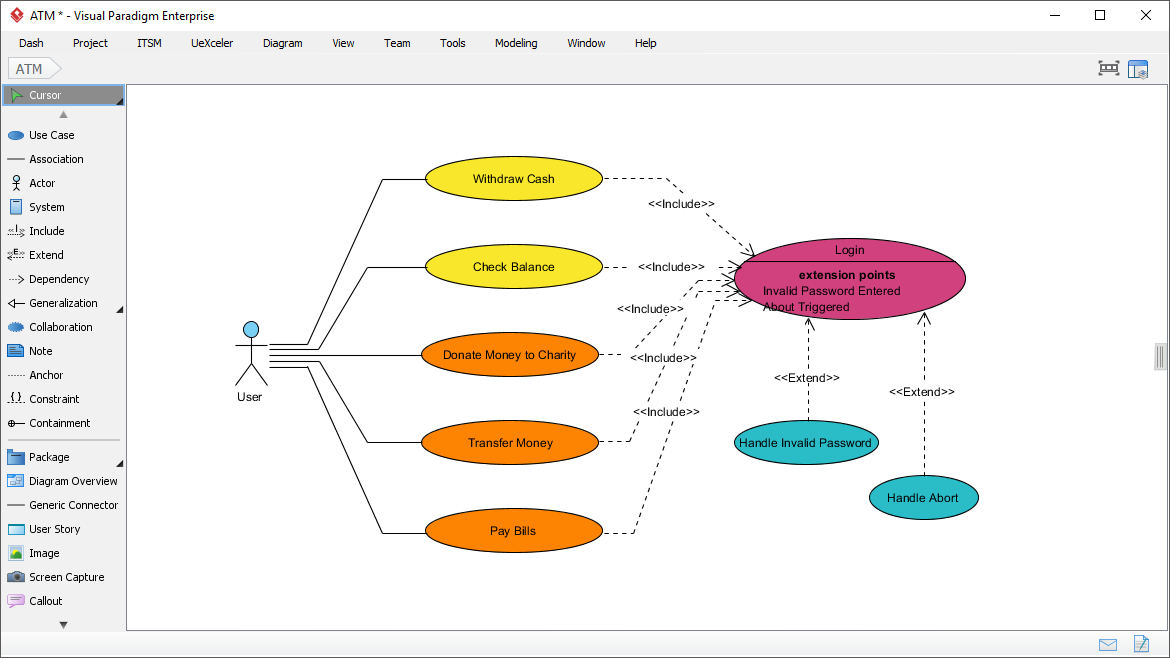
Glue one endpoint of the Association shape to a connection point on an Actor shape. In a use case diagram, drag an Association connector shape onto the drawing page. Shows that one use case adds functionality to another.Įxample: To indicate a relationship between an actor and a use case Shows how a use case is broken into smaller steps. Indicates that a use case is a specific way to achieve goals of the general use case. Indicates that one use case has a dependency on another. Shows the relationship of an actor to a use case.

Use connector shapes to indicate relationships between shapes in the diagram. To resize the subsystem, select the shape, and then drag a selection handle.ĭrag Use Case shapes from the UML Use Case stencil and place them inside the subsystem boundary, and then drag Actor shapes to the outside of the subsystem boundary. Click outside the shape on the drawing page. The subsystem can represent your entire system or a major component.ĭouble-click the Subsystem shape, and then type a new name for the for it, or press the Delete key to delete the existing name. If you still don’t see it, click the Expand the Shapes window button on the left.)ĭrag a Subsystem shape onto the drawing page. (If you don’t see the Shapes window, go to View > Task Panes and make sure that Shapes is selected. A UML Use Case stencil is open in the Shapes window. You should see the Shapes window next to the diagram. (A description of each one is shown on the right when you select it.) Then select either Metric Units or US Units. In the dialog box, select the blank template or one of the three starter diagrams. If the relationship between the diagram elements is one-to-one, then simply leave it blank.From the search results, select UML Use Case. It’s optional, but sometimes useful to add the standard UML notation for multiplicity: 1, 1.n, or *.

You can also show inheritance on both actions and actors with the standard UML notation of a connector with an open arrowhead. In my example, you can Mark a habit as done, or Mark a habit as done AND add a comment in the same action. When one action is an extension of another action (or a more specific version of that action), use extend to show that relationship.

So, the Update the habit history action is dependent on the other actions. But you wouldn’t update the habit history without one of the four actions: Add a habit, Delete a habit, Mark a habit as done or Add a comment. For example when you Add a comment in the habit tracker app, you must Update the habit history.



 0 kommentar(er)
0 kommentar(er)
